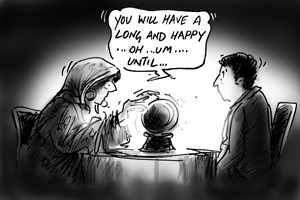The 2016 Census has already provided a lot of insight as to how Australia has changed in the five years since 2011. As a business operating in both Australia and New Zealand, we are interested in the relationship between the two countries in terms of migration as it relates to our population forecasting and community profile work.
This blog examines country of birth data from the 2016 Australian Census and looks at how some of the settlement patterns of Kiwis in Australia have changed compared to previous years. “Country of Birth” data identifies where people were born and is indicative of the level of cultural diversity in Australia. The mix of “Country of Birth” groups is also indicative of historical settlement patterns, as source countries for Australia’s immigration program have varied significantly over time.
Changing trends in New Zealand born residents
For most of the early 2000s and 2010s, Australia saw a steady influx of New Zealand born residents – this is well documented in the press, in statistical data such as the Census and also in everyday anecdotes, on both sides of the Tasman. I know that the plural of “anecdote” is not “data” but in the past decade, it feels as if ¾ of my friends from New Zealand have moved to various parts of Australia. But for all you know, I may not have that many friends. What is interesting when examining the 2016 Census is how much some of these trends have changed and how the level of overall New Zealand-to-Australia migration has changed.
The chart below shows that during the period from 1991-2016 the volume of New Zealand born residents per Census period varies and is almost cyclical in the 25-year time span, where census periods alternate between higher and lower levels of growth. The 2007-2011 period was the highest in recent history (dare I say in history? – I’ll fact check that first) in terms of increases of New Zealand born residents with almost 94,000 new Kiwis classified as usual residents in Australia. In the latest five-year period, however, there is almost a 2/3 decrease in the level of growth.
Change in number of New Zealand born residents by Census period

The medal standings
New Zealand has remained 2nd in terms of ranking as a birthplace compared to other overseas birthplaces, as shown in our Australia Community Profile. New Zealand as a birthplace has not climbed the ranks in any State or Territory has since 2011, but it has dropped in rankings in three states as shown in the table below.
The United Kingdom remains number 1 overall in Australia as the top overseas birthplace and has been leading the pack for decades. But since 2011 the UK has decreased in terms of overall total number as well as share, from 1,098,638 (5.1% of Australia) in 2011 to 1,087,749 (4.6% of Australia) in 2016, a decrease of 10,889 UK-born usual residents. This decrease, along with decreases in numbers of other European birthplaces relates to the wave of post-WWII migrants, with these (now, elderly) residents passing away in the five years from 2011-2016. Italy, Greece and the Netherlands are just some of the birth countries that have experienced losses in the total number of people in the 2011-2016 period for similar reasons.

While people who stated the UK as their birthplace have been decreasing in number, New Zealand has held onto 2.2% of all Australian usual residents in both 2011 and 2016, increasing in total number by 35,068 from 483,376 to 518,466.
By the time we have the 2021 Census, China is most certainly going to overtake New Zealand as the third most common overseas birthplace and push the kiwis into bronze medal contention. Kiwis may even (as my sports historian friends Ben Rea and Jeremy King reminded me) get a nasty flashback to the Beijing Summer Olympics in 2008 when New Zealand disappointingly finished fourth in several key events – because India is on its tail and may move into third place by 2021 given that between 2011 and 2016 there were 160,033 more India born usual residents in Australia, totalling 455,388 in 2016. But this is only based on recent trends.
The changing distribution of Kiwis in Australia
So where are these “new” New Zealand-born residents living in Australia?
Well, that trend has also changed in the latest census period. Previously, in the 2006-2011 period, 46% of the additional 93,933 Kiwis who stated New Zealand as their country of birth lived in Queensland, 25% in Western Australia, 17% in Victoria and 8% in New South Wales. Note: this is different to the total number of New Zealand born residents living in different States/Territories. When assessing those figures, Queensland is still the highest with 201,206 New Zealand-born residents, New South Wales second with 117,136 and Victoria third with 93,253.
Distribution of additional NZ-born usual residents by State/Territory

In the 2011-2016 period, this settlement pattern changed drastically, namely a momentum shift of the majority from Queensland to Victoria. “Only” 26% of the additional 35,068 New Zealand born residents lived in Queensland and 37% lived in Victoria – a loss of 20% in Queensland and a gain of 20% in Victoria compared to 2006-2011. Western Australia remained steady with a 24% take of all new Kiwis as did New South Wales with an 8% share. Other states and territories such as South Australia, Tasmania, Northern Territory and the ACT had a minor share between 0% and 2% which remains steady from previous censuses.
Why have we seen the shift of New Zealand born residents choosing Victoria over Queensland?
It could be something to do with New Zealanders’ perceived job opportunities in Queensland decreasing and more opportunity in Victoria, namely greater Melbourne (91% of New Zealand born residents who came to Victoria between 2011 and 2016, moved to Greater Melbourne which makes sense given that most people migrate to places specifically for education, employment and other progression opportunities). I think this may only be a small factor in this momentum change but more to do with fewer New Zealand born residents from Victoria leaving Australia and returning to New Zealand and more Queensland based Kiwis being the ones contributing to the increase in Australia-to-New Zealand migration (see migration chart below). I bet there are a few rugby league clubs in Queensland who won’t be too happy about losing their Kiwis. Hopefully, my Halswell Hornets in Christchurch benefit from this a bit.
Why did New South Wales capture such a low share of New Zealand born residents given that Sydney is Australia’s biggest city?
Compared to Greater Melbourne, Greater Sydney gained only a tenth (1,576) of Melbourne’s additional New Zealand born residents. This could be a result of higher living costs, less affordable housing and a much higher price entry point into the Sydney housing market, better job opportunities elsewhere in Australia and even other factors such as less congestion or more affordable lifestyle choices elsewhere in Australia.
Interestingly Western Australia retains the same share even with a decline in mining job opportunities there. In another five years, we will see whether the share and the total number of New Zealand born residents in Western Australia changes.
Changing migration patterns: information from across the ditch
Finally, this information goes hand in hand with what has been discussed in New Zealand for a few years now and what Statistics New Zealand’s ‘Permanent and Long Term Migration’ data indicates – the changing of the migration tides between New Zealand and Australia. We’ve seen net migration between Australia and New Zealand change from a net loss of almost 40,000 New Zealand residents to Australia in 2012 to a gain of 1,933 residents in 2016 because of migration pattern changes between the two countries. The major story here is that fewer Kiwis are leaving New Zealand. With the New Zealand economy in a comfortable and optimistic place, consumer confidence increasing while the outlook for employment opportunities and a better lifestyle in Australia not as promising for New Zealanders as it once was – this decrease in departures is not too surprising.
Permanent and long-term migration trends between Australia and New Zealand

Source: Statistics New Zealand
This is just one of the interesting stories which came out of the “Ethnicity” part of the 2016 Census release. There are many more stories that will help to strengthen our understanding of how Australia is changing, helping confirm or dismiss certain story lines thrown around by politicians and the media, and assist you when planning for the future.

.id are population experts who analyse, enhance and present Census data through web applications and consulting services. You can access our free community population profiles online to see how the results from 2016 Australian Census relate to your local area.














